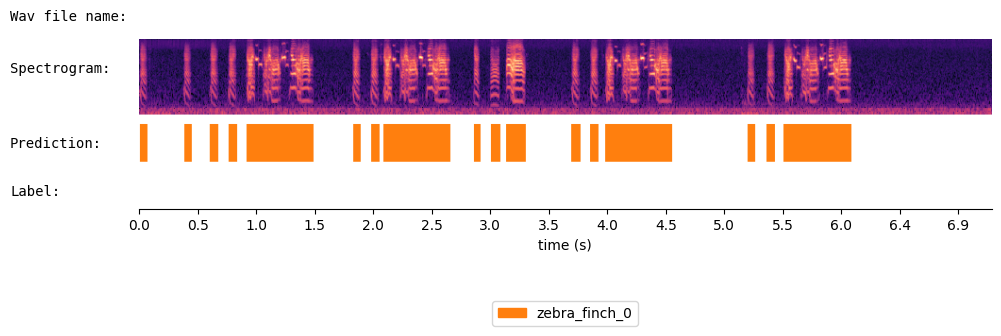Positive Transfer Of The Whisper Speech Transformer To Human And Animal Voice Activity Detection
We proposed WhisperSeg, utilizing the Whisper Transformer pre-trained for Automatic Speech Recognition (ASR) for both human and animal Voice Activity Detection (VAD). For more details, please refer to our paper:
Positive Transfer of the Whisper Speech Transformer to Human and Animal Voice Activity Detection
Nianlong Gu, Kanghwi Lee, Maris Basha, Sumit Kumar Ram, Guanghao You, Richard H. R. Hahnloser
University of Zurich and ETH Zurich
Accepted to the 2024 IEEE International Conference on Acoustics, Speech and Signal Processing (ICASSP 2024)
The model "nccratliri/whisperseg-base-animal-vad-ct2" is the Ctranslate2 version of "nccratliri/whisperseg-base-animal-vad". It can only be used for faster inference. For finetuning the model, use "nccratliri/whisperseg-base-animal-vad" instead.
The "xxx-ct2" model need to be loaded by WhisperSegmenterFast (instead of WhisperSegmenter)
Usage
Clone the GitHub repo and install dependencies
git clone https://github.com/nianlonggu/WhisperSeg.git
cd WhisperSeg; pip install -r requirements.txt
Then in the folder "WhisperSeg", run the following python script:
from model import WhisperSegmenterFast
import librosa
import json
segmenter = WhisperSegmenterFast( "nccratliri/whisperseg-base-animal-vad-ct2", device="cuda" )
sr = 32000
spec_time_step = 0.0025
audio, _ = librosa.load( "data/example_subset/Zebra_finch/test_adults/zebra_finch_g17y2U-f00007.wav",
sr = sr )
## Note if spec_time_step is not provided, a default value will be used by the model.
prediction = segmenter.segment( audio, sr = sr, spec_time_step = spec_time_step )
print(prediction)
{'onset': [0.01, 0.38, 0.603, 0.758, 0.912, 1.813, 1.967, 2.073, 2.838, 2.982, 3.112, 3.668, 3.828, 3.953, 5.158, 5.323, 5.467], 'offset': [0.073, 0.447, 0.673, 0.83, 1.483, 1.882, 2.037, 2.643, 2.893, 3.063, 3.283, 3.742, 3.898, 4.523, 5.223, 5.393, 6.043], 'cluster': ['zebra_finch_0', 'zebra_finch_0', 'zebra_finch_0', 'zebra_finch_0', 'zebra_finch_0', 'zebra_finch_0', 'zebra_finch_0', 'zebra_finch_0', 'zebra_finch_0', 'zebra_finch_0', 'zebra_finch_0', 'zebra_finch_0', 'zebra_finch_0', 'zebra_finch_0', 'zebra_finch_0', 'zebra_finch_0', 'zebra_finch_0']}
Visualize the results of WhisperSeg:
from audio_utils import SpecViewer
spec_viewer = SpecViewer()
spec_viewer.visualize( audio = audio, sr = sr, min_frequency= 0, prediction = prediction,
window_size=8, precision_bits=1
)
Run it in Google Colab:
For more details, please refer to the GitHub repository: https://github.com/nianlonggu/WhisperSeg
Citation
When using our code or models for your work, please cite the following paper:
@INPROCEEDINGS{10447620,
author={Gu, Nianlong and Lee, Kanghwi and Basha, Maris and Kumar Ram, Sumit and You, Guanghao and Hahnloser, Richard H. R.},
booktitle={ICASSP 2024 - 2024 IEEE International Conference on Acoustics, Speech and Signal Processing (ICASSP)},
title={Positive Transfer of the Whisper Speech Transformer to Human and Animal Voice Activity Detection},
year={2024},
volume={},
number={},
pages={7505-7509},
keywords={Voice activity detection;Adaptation models;Animals;Transformers;Acoustics;Human voice;Spectrogram;Voice activity detection;audio segmentation;Transformer;Whisper},
doi={10.1109/ICASSP48485.2024.10447620}}
Contact
- Downloads last month
- 16
